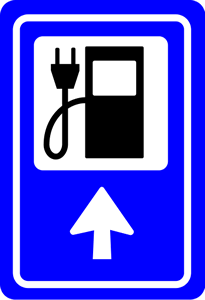EV Innovation Goes Full Charge Ahead
Electric vehicles are increasingly familiar sights around town, but the charging infrastructure needs to catch up as countries around the world make plans to transition away from fuel-burning vehicles.
By Caroline Hayes
 When pre-orders for Tesla’s Model S opened in March 2016, the public’s appetite for luxury electric vehicles was confirmed, as thousands of customers registered to buy one. According to the latest figures from Tesla, 455,000 people are happy to wait for a five-door electric car that won’t come off the production line before the end of 2018.
When pre-orders for Tesla’s Model S opened in March 2016, the public’s appetite for luxury electric vehicles was confirmed, as thousands of customers registered to buy one. According to the latest figures from Tesla, 455,000 people are happy to wait for a five-door electric car that won’t come off the production line before the end of 2018.
The number of EVs on the roads is still low. In June 2017, the industry celebrated passing the two-million vehicle mark and the International Energy Agency (IEA) reported record worldwide EV sales of over 750,000 in 2016, up from 547,220 in 2015. Even so, that’s means just 0.2% of vehicles currently on the roads are EVs.
That is about to change in several key countries around the world. In September 2017, China, the world’s second-largest economy, announced a 2030 deadline to cap carbon emissions, which it plans to do by phasing out vehicles that have combustible engines. The country is choking under a widespread blanket of smog and is taking measures to limit pollution, and also reduce expensive petroleum imports. China’s move follows announcements by the UK and France earlier in 2017 to ban petroleum-burning vehicles by 2040. Both countries cited poor air quality and escalating costs related to public health. The auto industry is making EVs a priority as well. Volvo has announced that all of its vehicles from 2019 onwards will be EVs or hybrids.
There are three main reasons for electrification, says Dr. David Greenwood, leader of the Advanced Propulsion Systems team at the University of Warwick, Coventry, UK. Firstly, there is a need for energy security. “Oil is becoming more expensive to refine and many countries want to move away from importing large quantities of oil in a politically turbulent situation,” he says.
Coupled with this is a relatively new drive to improve air quality. “Until three years ago,” says Greenwood, addressing “climate change and the reduction of CO2 emissions were priorities, but now, across Europe and Asia in particular, air quality has been a major driver for electrification.”
Regulation, either through fines or usage restrictions, has been the main strategy for reducing CO2 to improve air quality. Another factor, says Greenwood, is the emergence of city mayors, in London, Paris, and other cities, who are making public and environmental health a priority. These figures could become conduits to infrastructure changes.
Charging Infrastructure Lags
Consumer demand is only just beginning to kick in. The period when early adopters pay high prices for new technology is passing and many EVs are now affordable. This is partly due to incentives from various governments to encourage sales of EVs but also, says Greenwood, due to manufacturers winning the hearts and minds of drivers.
“We are just getting to the point that consumers are beginning to realize that these are very pleasant vehicles to drive in cities. They have better driving characteristics, they are quieter, they are comfortable and, if you can cope with the reduced range, then consumers are preferentially selecting electric vehicles,” he said. “This is a real turning point for the industry.”
The current range limits are a factor that makes infrastructure changes imperative. The range of an EV is often cited as its Achilles’ heel. Most electric cars need a recharge every 100 miles, although the Model S will have a range of over 200 miles, says Tesla. With an average of 30 minutes charge time with existing technology, a sufficient charging infrastructure is needed to make driving an EV feasible. At present, the IEA reports only 2.3 million charging points worldwide. However, public charging points are in the minority at around 328,570, or less than 15%. It is assumed that the majority of drivers charge their vehicles at home.
To address this, governments are incentivizing cities and companies who help expand the charging network. The UK government has announced that it will provide a tax break for companies spending on electric charge points in England, Wales, and Scotland. The 100% first year allowance for expenditure of at least £200,000 (around $260,000) on charging points will allow companies to deduct the full cost from profits before tax. Germany pledged $300 billion to expand its charging infrastructure. In the US, incentives are currently on a state or county basis, with 21 states offering some type of tax incentive to businesses who install a charge point.
Yet significant planning and investment is still needed throughout the world to provide adequate charging opportunities for drivers, as well as prepare the grid for this coming demand.
Charging Infrastructure Relies on Durable Connectors
The connector industry’s efforts to support this expansion include the development of charging cables that are robust for use in harsh environments, to withstand a variety of outdoor conditions in remote, isolated areas as well as cities and towns.
 Northwire, a LEMO company, for example, has a range of EV cables, developed to withstand temperature extremes and harsh environments. They are compatible with SAE J1772 connectors, for the US market, and UL 2594 and NEC 625 charging systems, and as straight or retractable cables.
Northwire, a LEMO company, for example, has a range of EV cables, developed to withstand temperature extremes and harsh environments. They are compatible with SAE J1772 connectors, for the US market, and UL 2594 and NEC 625 charging systems, and as straight or retractable cables.
Huber + Suhner hopes to tackle the range issue of EVs with the recent introduction of the Radox High Power Charging System. The Swiss company uses its Radox cooling system for charging systems that can keep charging times to less than 15 minutes (to 80% battery charge).
The Radox High Power Charging System multiplies the power throughput of a charging cable and allows a smaller cable cross section.
The Radox (radiation X-linked) technology crosslinks thermoplastic polymers using electron beams to improve the thermal, mechanical, and chemical properties of the cable insulation material. The resulting cables are robust. They do not melt, have better abrasion resistance and resist cuts better than conventional cables, and have thinner insulation for slimmer cable diameters.
A high power throughput of 400A/1,000V, according to ISO/IEC 61851-23 Ed 2.0 CD, is achieved. The cable and connector combination includes CCS (Combined Charging System) type-1 connectors, for use in the US and Canada, and type-2 connector for use in Europe. The slim (30mm) cable is light and flexible, for ease of use at charging points. The system also includes a cooling or cooler and coolant.
Regulations and incentives will play a part in the worldwide adoption of EVs, but it will be battery design that will spur on the consumer embrace of the technology, as it will increase the range and practicality of the vehicle. Here is where cable and connector companies need to pay close attention as power charging inputs rise and the need for fast, efficient charging, in all conditions, is required.
[hr]
Caroline Hayes is a technology writer based in the UK.
Recently posted:
[related_posts limit=”10″]






